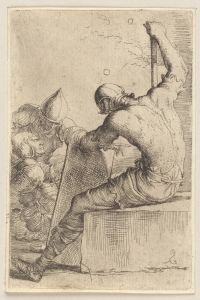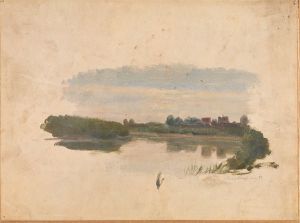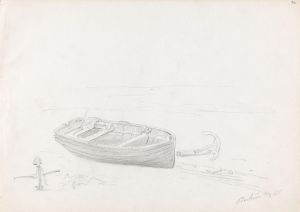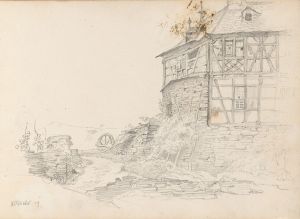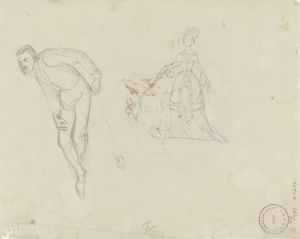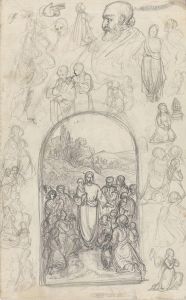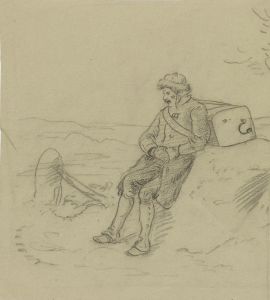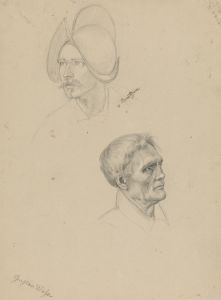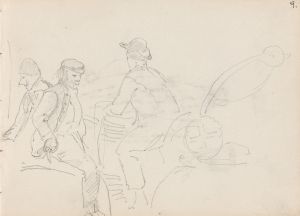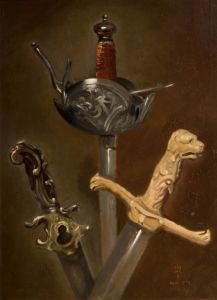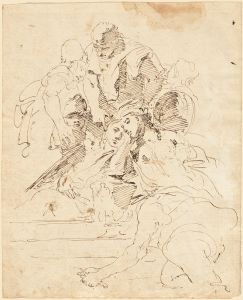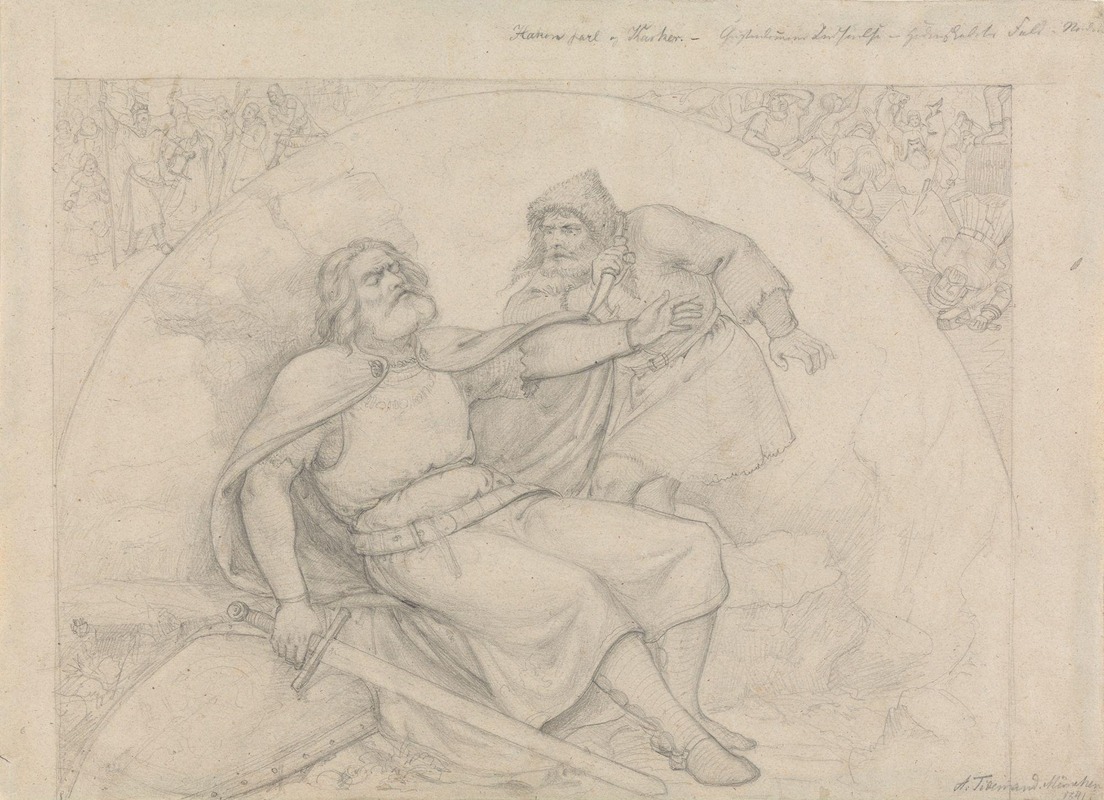
Håkon Jarl og Karker
A hand-painted replica of Adolph Tidemand’s masterpiece Håkon Jarl og Karker, meticulously crafted by professional artists to capture the true essence of the original. Each piece is created with museum-quality canvas and rare mineral pigments, carefully painted by experienced artists with delicate brushstrokes and rich, layered colors to perfectly recreate the texture of the original artwork. Unlike machine-printed reproductions, this hand-painted version brings the painting to life, infused with the artist’s emotions and skill in every stroke. Whether for personal collection or home decoration, it instantly elevates the artistic atmosphere of any space.
Adolph Tidemand's painting "Håkon Jarl og Karker" is an evocative work that captures a dramatic moment from Norse history. Adolph Tidemand, a prominent Norwegian painter of the 19th century, was known for his detailed and expressive depictions of Norwegian history and folklore. This particular painting illustrates a scene from the saga of Håkon Sigurdsson, also known as Håkon Jarl, a powerful earl of Norway during the late 10th century.
Håkon Jarl was a significant historical figure who played a crucial role in the resistance against the Christianization of Norway. He was a staunch supporter of the old Norse pagan traditions and ruled as a de facto king in Norway from around 975 until his death in 995. His reign was marked by his efforts to maintain the old ways in the face of increasing pressure from Christian forces, particularly those led by King Olaf Tryggvason.
The painting depicts a tense and pivotal moment involving Håkon Jarl and his thrall, Karker. According to the sagas, as Olaf Tryggvason advanced to claim the throne and spread Christianity, Håkon Jarl found himself in a precarious position. He sought refuge in a pigsty with his loyal servant Karker. The sagas narrate that Håkon, aware of the bounty on his head and the threat posed by Olaf, was deeply troubled by the possibility of betrayal.
In Tidemand's painting, the atmosphere is charged with suspense and foreboding. The artist captures the psychological tension between Håkon and Karker, as they hide from their pursuers. The expressions on their faces and the dimly lit setting underscore the gravity of their situation. Håkon is depicted as a figure of authority and desperation, while Karker's demeanor suggests inner conflict and fear.
The story concludes with a tragic twist. Despite their close bond, Karker ultimately succumbs to the temptation of the reward offered for Håkon's capture. In a moment of betrayal, Karker kills Håkon while he sleeps, hoping to gain favor with Olaf Tryggvason. However, the act of treachery does not bring Karker the anticipated rewards, as he is later executed by Olaf, who despises betrayal.
Tidemand's "Håkon Jarl og Karker" is not only a representation of a historical event but also a reflection on themes of loyalty, power, and the inevitable change brought by the tides of history. The painting is a testament to Tidemand's skill in conveying complex narratives through art, capturing both the historical context and the emotional depth of his subjects.
This work is part of Tidemand's broader oeuvre, which often focused on Norwegian history and culture, contributing significantly to the national romantic movement in Norway. His paintings are celebrated for their meticulous attention to detail and ability to evoke the spirit of the times they depict. "Håkon Jarl og Karker" remains an important piece in understanding both the historical narrative of Norway and the artistic endeavors of Adolph Tidemand.





